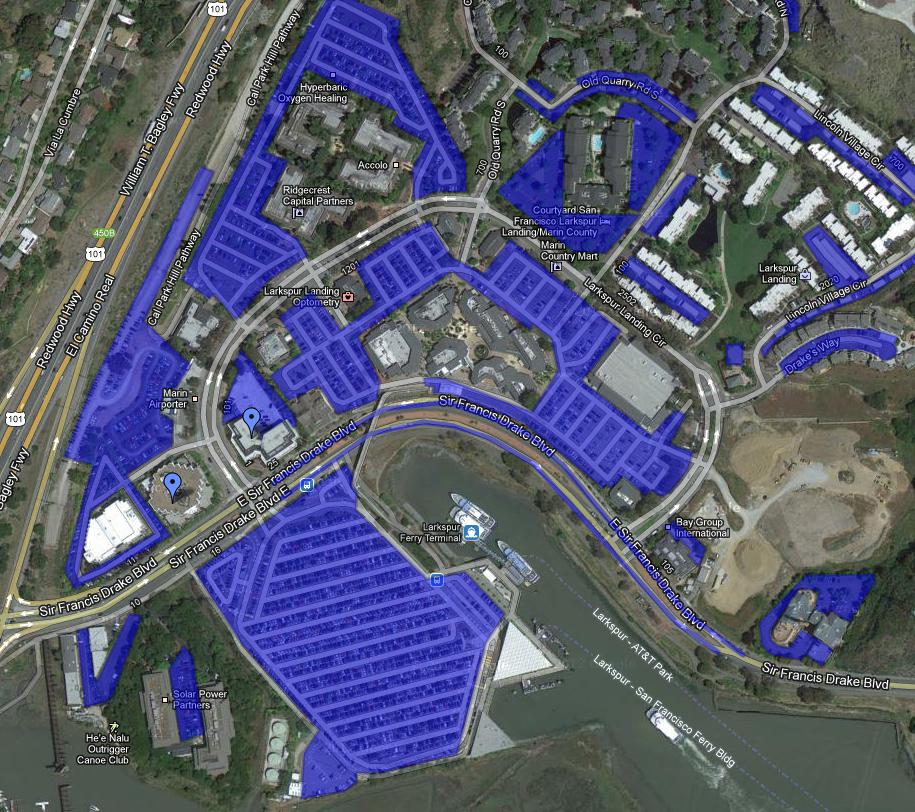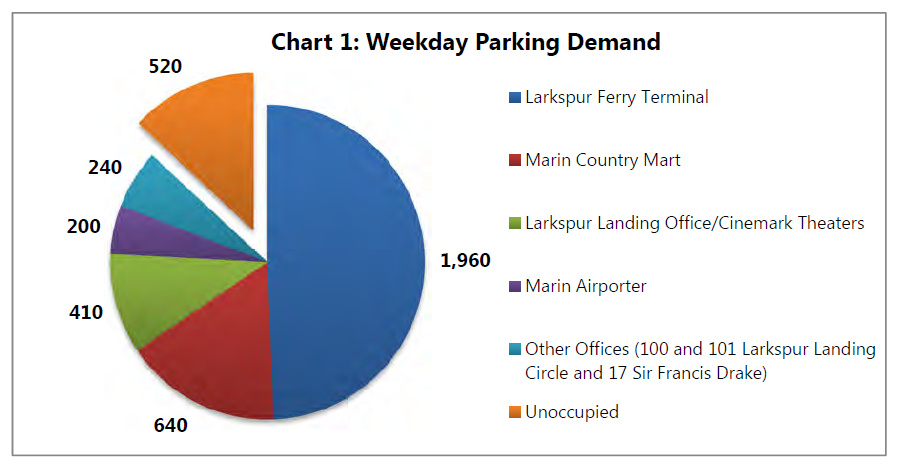There’s no question that Larkspur Ferry has an access problem. If you drive, there’s a vanishingly small chance you’ll get a parking space after 8:30am. If you don’t drive, your options are to live in the neighborhood, walk for almost a mile along the freeway, bike for 15 minutes from the Transit Center, or take the miserably slow GGT Route 29 bus.
In response to this perceived lack of access, GGT is again investigating some exceedingly expensive parking garages paid for by a new parking fee. (They had last discussed a parking solution in 2007, when ridership was about what it is today.) While this would expand access, this solution fails to take into account the breadth of options available, including 520 unused parking spaces in Larkspur Landing that already exist.
Organization before electronics before concrete
An old adage marks best practice for facilities design: organization before electronics before concrete. The first, organization, rearranges existing resources to maximize their utilization. The second, electronics, upgrades the systems you already have so you can make even better use of your resources. The third, concrete, adds resources to your now-optimized pool. By prioritizing cheaper solutions before expensive ones, organizations can save a lot of money.
In the case of Larkspur Terminal, GGT’s supply of access to the ferry (the parking spaces, bus seats, bicycle racks, housing units, and office space in the vicinity) is the resource. As currently designed, there is a shortage of access, but GGT doesn’t need to add more garages just yet.
The Larkspur Station Area Plan revealed that, during the day, 520 parking spaces in the neighborhood went unoccupied. Though GGT does have a parking problem on its own property, the area’s parking supply is more than ample to meet the demand.
These spaces aren’t being used because the parking supply isn’t well-organized. People driving to the ferry have the option of parking for free on the street, for free in the ferry parking lot, or for $4 per day at the Marin Airporter. The other lots aren’t an option to them, as they’re reserved for more office workers than exist and patrons of Marin Country Mart who mostly come on the weekend.
Through a reorganization of the neighborhood’s parking supply, GGT could expand ferry parking by 520 spaces essentially for free.
GGT, Larkspur, and the businesses in Larkspur Landing would need to work together to figure out the precise rules, but the core of any plan would be pricing: a $2 charge per day for anyone parking in the area who doesn’t get parking validated by a retail store or who doesn’t have an employee parking pass. The owner of each lot would get income from their charge. Larkspur would earmark on-street parking charges to neighborhood improvements.
Coincidentally, 520 spaces is nearly the same number of spaces GGT wants to add in a large, 969-space garage. Since it would be built on 400 existing parking spaces, the garage would net 569 parking spaces. Unlike the essentially free 520, however, the 569 spaces would cost an astounding $44,000 apiece.
No need for concrete
Organization before electronics before concrete means other options should be explored before investing in costly new infrastructure. An examination of the neighborhood finds that parking already exists to meet demand, if GGT can harness it.
Of course, if the politics prove impossible and those open spaces can't be used for ferry riders, GGT will need to turn to the parking equivalent of electronics: a shuttle from the Transit Center. We'll tackle that question next.

